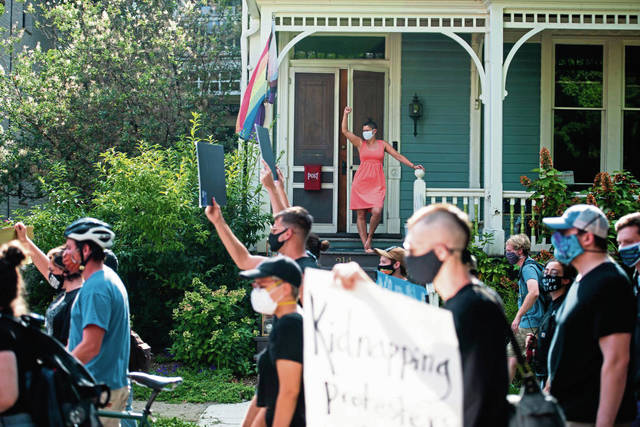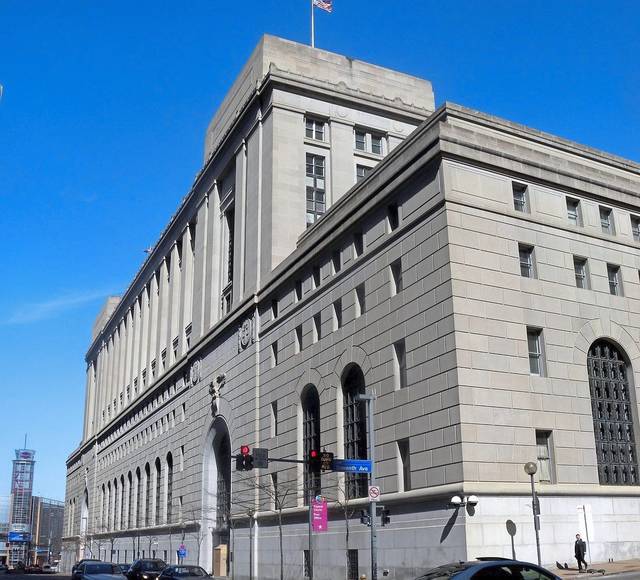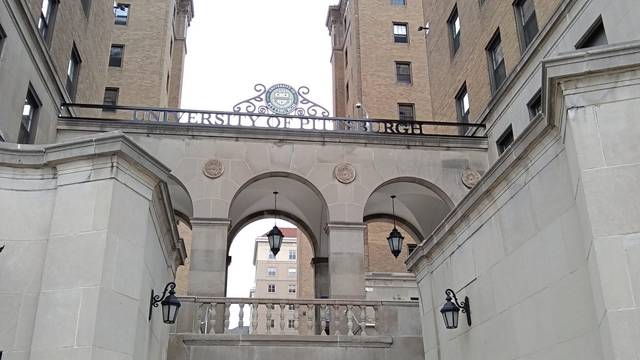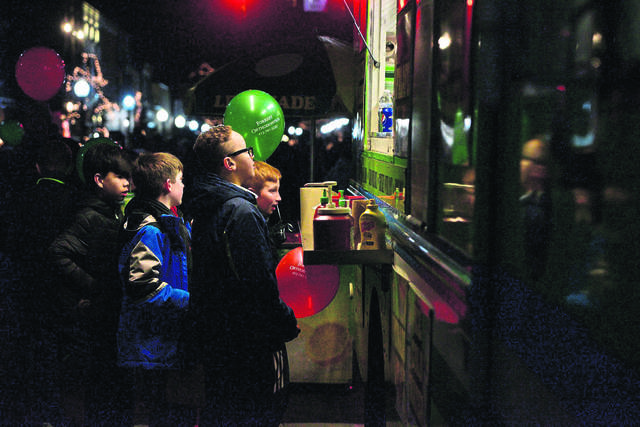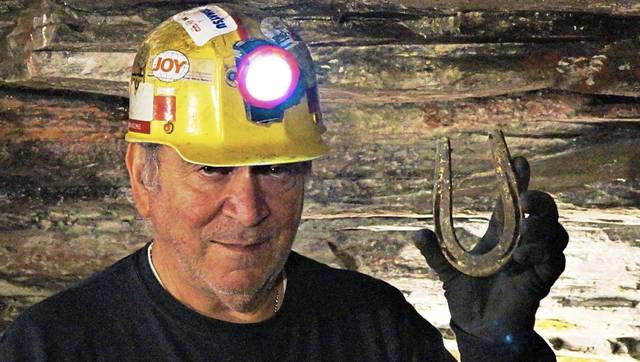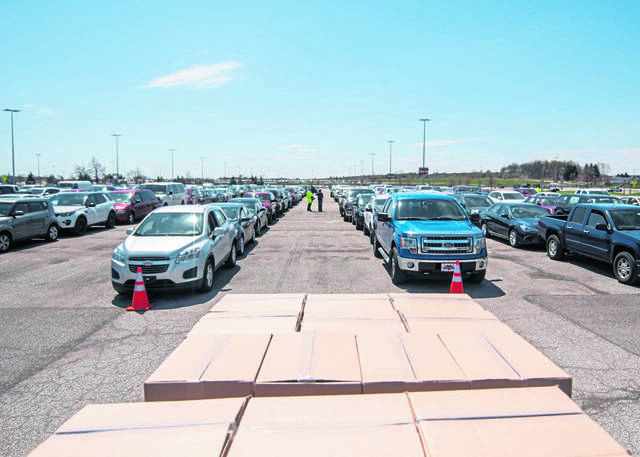More Pittsburgh city leaders on Monday added their voices to a growing chorus of concern and alarm over tactics used by city police in the weekend arrest of a protester in Oakland, with Mayor Bill Peduto decrying the arrest as “disturbing” and barring the tactic from use during peaceful protests.
Footage of the arrest of 24-year-old Matthew Cartier showed plainclothes police officers pop out of an unmarked van and pull Cartier inside. The officers, who police brass said were wearing badges and identified themselves as law enforcement, were not in uniform, and several carried rifles.
It’s a tactic that has been used by federal agents in Portland to arrest protesters off the streets, and it has been decried by the mayor of the Oregon city.
Pittsburgh Councilwoman Deb Gross likened the arrest Saturday to a “hostile abduction” that belongs among military wartime tactics, not in Pittsburgh policing.
“I really want to hear from Public Safety what their excuse is,” she said.
She wants more video footage of what transpired to be made public. Police have said their interactions with Cartier were captured on body cameras, and Cmdr. Ed Trapp said that footage will be available for Cartier’s court proceedings.
Trapp and other police brass said Cartier was leading a line of bicyclists in blocking and directing traffic as protesters moved through Oakland. Trapp said Cartier refused on numerous occasions to move his line back to clear the intersection of Fifth Avenue and North Dithridge Street.
Believing Cartier was putting drivers and pedestrians at risk, Trapp said the decision was made to attempt a “low-visibility arrest,” something he believed would not draw the attention of or incite demonstrators.
The opposite occurred.
Protesters marched on Peduto’s Point Breeze home late Sunday afternoon. He previously had called the arrest “alarming” and expressed “serious concerns” to Public Safety leadership. While he said he wasn’t prepared to take an outright stance, he said the tactic warranted further examination, particularly in regard to whether it’s an appropriate use of force during a protest.
Just a quick reminder of Constitutional rights. They have restrictions. The right to assemble is a guaranteed right, the right to shut down public streets, is a privilege. That privilege is sanctioned by laws and codes. In Pittsburgh, we worked w ACLU & CPRB to create our codes.
— bill peduto (@billpeduto) August 16, 2020
On Monday, however, the mayor said that he will “never tolerate these tactics being used at peaceful protests again.” Peduto alluded to having seen more video footage of police interactions with Cartier, and he said online videos made him livid.
It is hard to find the words for how livid I was after seeing the online videos of the disturbing arrest at Saturday's protest. I have taken the time to review all the video and information that has been made available to me.
— bill peduto (@billpeduto) August 17, 2020
1/2
Allegheny County District Attorney Stephen A. Zappala Jr. said Cartier should not have been taken into custody.
“On Saturday, Pittsburgh Police, directed by the Public Safety director and the mayor, chose to proceed by arrest and criminal complaint on charges that should have been handled via summons,” he said Monday in a statement.
Zappala said his office got the police body camera footage and, pending a review, Cartier’s charges “appear to be a summary offense at best” and warrant no more than a ticket.
Council President Theresa Kail-Smith said the focus should be on whether policies need to change.
“I want to have a better understanding here about what (we) might be able to do better or different and am working on getting some answers to the public,” she said.
She said she has requested a meeting with police Chief Scott Schubert, Public Safety Director Wendell Hissrich and other police brass.
‘In the middle of a … movement’
The type of arrest seen Saturday in Pittsburgh — and in Portland and New York City — is generally meant for dangerous situations in which speed must be a factor, said Frank Straub, the former police chief in Spokane, Wash., and director of the Center for Mass Violence Response Studies at the Police Foundation.
“The origins were really focused on surprise, shock … typically to arrest somebody who is dangerous, who may be armed,” Straub said of the arrest tactic. “The idea is to be able to get as close to the person as possible, apprehend them and get them out of there.”
Making officers recognizable as law enforcement is imperative, Straub said, and the arrest tactic can be dangerous for all involved if that isn’t clear.
“It’s incredibly important for everyone’s safety that officers are clearly identified so there’s no mistake in terms of who is grabbing this person on the street and putting them in the van,” he said.
Straub said the tactic generally should be used cautiously and judiciously.
University of Pittsburgh law professor and former congressional candidate Jerry Dickinson said it’s the type of arrest that has to be absolutely necessary.
“We’re in the middle of a civil rights movement that is calling on accountability,” said Dickinson, who unsuccessfully challenged Democratic U.S. Rep. Mike Doyle in the June primary. “The last thing the city of Pittsburgh needs to be doing is aggravating that public distrust of police.”
Dickinson said the arrest could have a chilling effect on the Black Lives Matter movement. He called it “the intentional exercise of power by the police that discourages lawful protest.”
“The mayor and the chief of police and law enforcement are going to have to go back to the drawing board and reconsider this policy for low-visibility arrests,” he said.
Communication breakdown
Cartier’s arrest came during the weekly Civil Saturdays event and marches organized by the group Black, Young and Educated (BYE). Leaders of the group took aim at Peduto and police leaders. They called the initial responses to the arrest an attempt to vilify protests.
“They are endlessly trying to push this narrative that we are not concerned for anyone’s safety,” said Nicholas Anglin, co-founder of the group. “BYE always lets medics, ambulances and anyone through if there’s an emergency. City police are completely disregarding the fact that Black Pittsburgh — Black Allegheny County — is in a state of emergency.”
The arrest came several hours in to the peaceful protest. Cartier was among the marshals for the protest — a group of activists, often on bicycles, that blocks intersections and traffic during protests. Therein, police said, lies the problem.
“We began to fear — and we’ve seen it before — they were going to turn cars into traffic, and they’re going to cause an accident, cause a pedestrian to get run over, something like that,” Cmdr. Ed Trapp said.
But BYE leaders said that isn’t the case. AD Bagheera, who handles the group’s communications, said she’s received only one email from the police bureau’s Civil Affairs Unit, on June 27. She said remarks made by police are an attempt to cover up the poor job done by the unit.
Anglin said the only people putting protesters at risk are the police, and the marshals have “done nothing but pick up the slack where city police are lacking.”
“There’s been no communication with Public Safety about routes and, in all honesty, that’s not our job,” he said.
Cara Cruz, a spokeswoman for the Public Safety Department, said members of the Civil Affairs Unit had success in communicating and collaborating with BYE in the early weeks of the protests but “those channels of communication have largely broken down.
“It is still the hope of police that both sides can come together in an effort to ensure the safety of protesters and the citizens of Pittsburgh during ongoing demonstrations,” she said.


